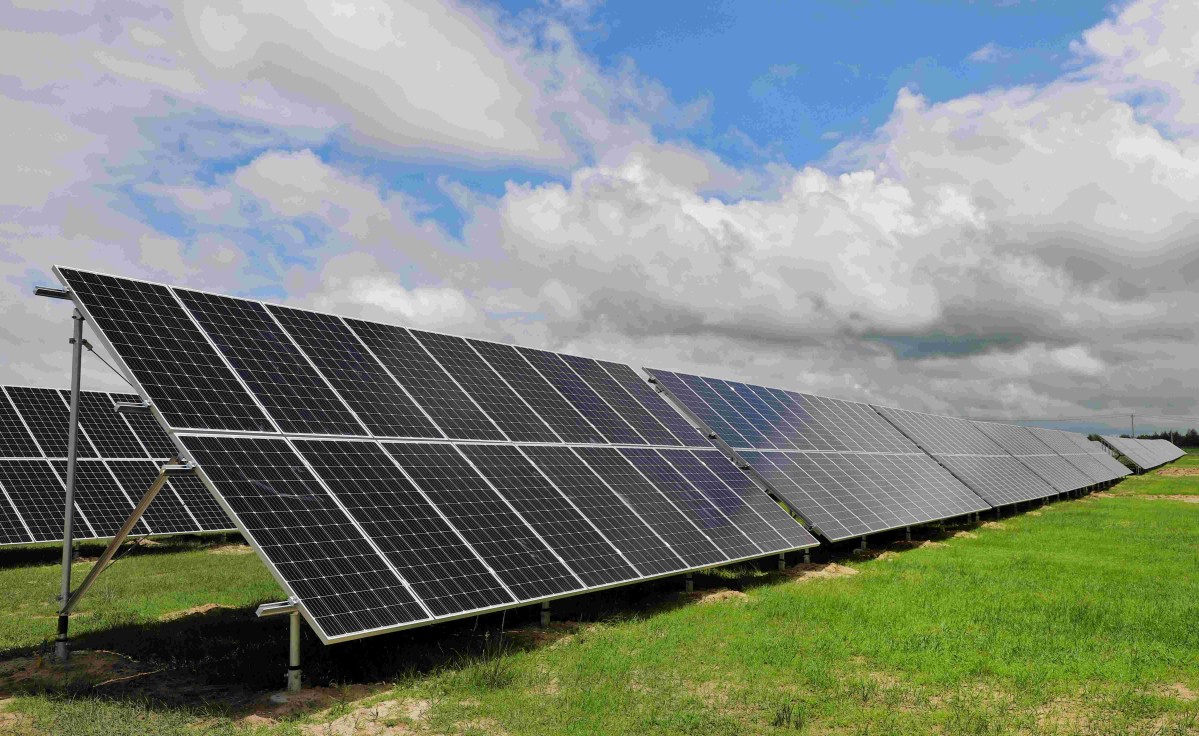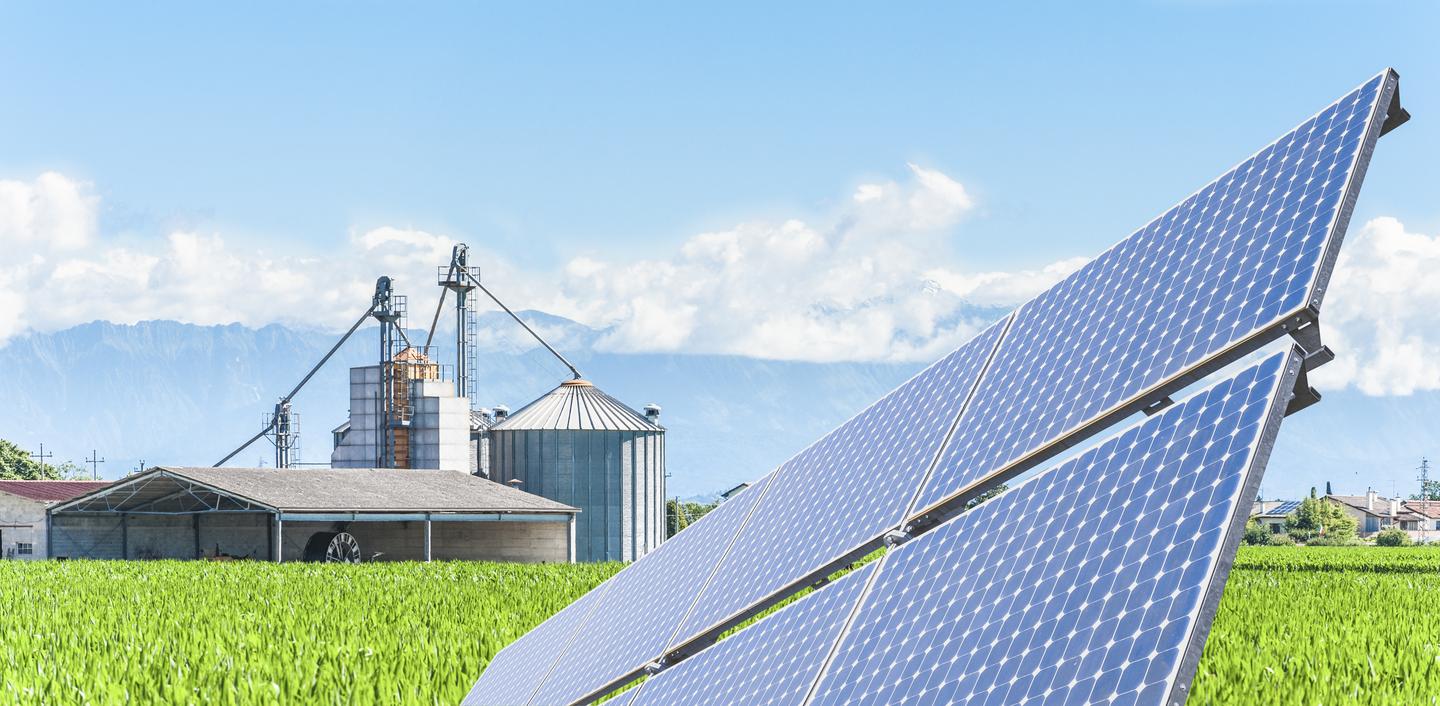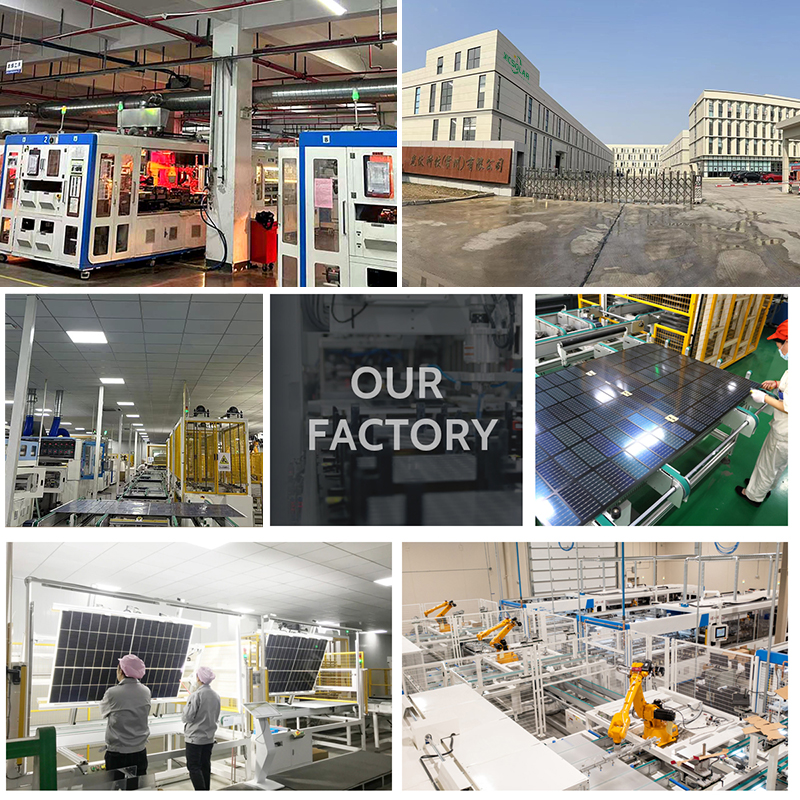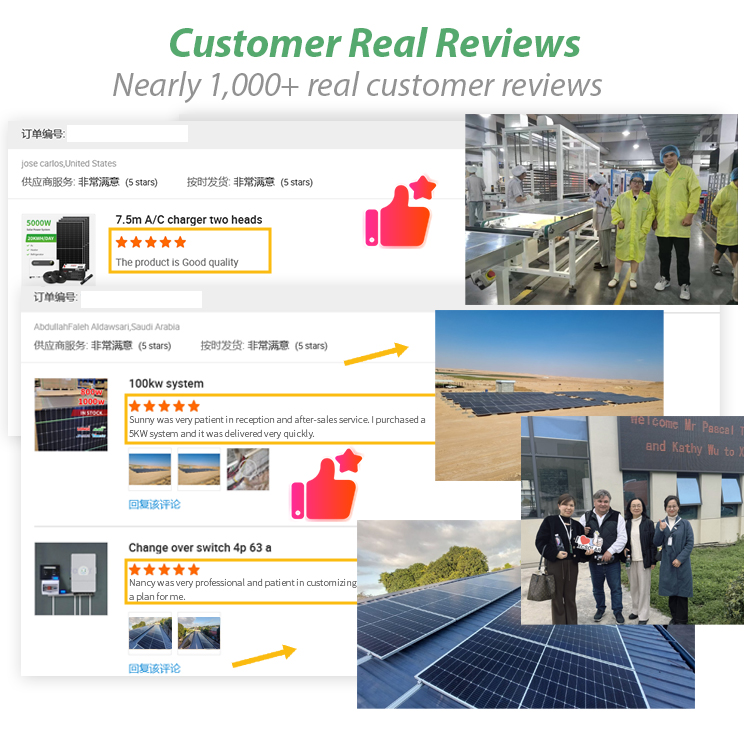Monocrystalline solar panels, polycrystalline solar panels and thin-film solar panels are the three most common solar panels on the market. These solar panels vary in appearance, performance, cost and manufacturing methods, so do you know the key differences, costs and efficiency ratings of each type?
Solar panels capture the sun’s energy and convert it into electricity. A typical solar panel consists of individual solar cells made up of layers of silicon, boron and phosphorus. Positive charges are provided by the boron layer, negative charges are provided by the phosphorus layer, and the silicon wafer acts as a semiconductor. When photons from the sun strike the panel surface, they knock electrons out of the silicon and into the electric field created by the solar cell. This creates a directional current that can then be converted into usable power, a process called the photovoltaic effect.
-
Monocrystalline silicon solar panel
“Monocrystalline silicon” refers to the material used to make these panels, which is made from single crystal silicon formed into strips and cut into wafers. Monocrystalline solar cells are one of the most popular panel types, although they are more expensive. Monocrystalline’s high efficiency rating is one of the main reasons for its popularity. Because monocrystalline cells are composed of a single crystal, the electrons that generate the current have more room to move. As a result, monocrystalline solar cells are more efficient than polycrystalline solar cells, with efficiency ratings ranging from 15% to 19%.
In fact, monocrystalline solar panels have the highest efficiencies on the market, with efficiencies as high as 24% in some cases.
● Price: Due to the complicated manufacturing process, monocrystalline solar cells are slightly more expensive than polycrystalline and thin-film solar cells.
● Efficiency: about 15-19%.
● Lifespan: After 25 years, you can get around 80% efficiency.
-
Polycrystalline solar panels
Polycrystalline solar panels generally have a blue tint compared to monocrystalline solar cells because light reflects differently from the silicon shards in polycrystalline cells than it does from monocrystalline silicon wafers. However, because their silicon purity and construction are lower than monocrystalline panels, they are less efficient in terms of energy conversion and space. They are also less heat-resistant, making them less efficient in high-temperature environments.
● Price: Polycrystalline solar panels are slightly less expensive than monocrystalline solar panels because the manufacturing process is simpler.
● Efficiency: about 13-16%.
● Lifespan: After 25 years, you can achieve approximately 80% efficiency.
-
Thin film solar panels
Membrane panels are characterized by a very fine flexible layer. Since each panel does not require solar bracket support, they are lighter and easier to install. Unlike crystalline silicon panels, which come in standard sizes of 60, 72 and 96 cells, thin-film panels can be customized to meet specific needs. However, they are less efficient than standard silicon solar panels.
● Price: Thin-film solar panels are slightly less expensive than crystalline solar panels, but have a shorter lifespan.
● Efficiency: about 7-13%.
● Lifespan: Generally speaking, crystal solar panels have a longer lifespan.
Thin film solar panels are made from different materials than crystalline solar panels. as follows:
● Cadmium Telluride (CdTe)
● Amorphous silicon (a-Si)
● Copper Indium Gallium Selenide (CIGS)
1. Cadmium telluride (CdTe)
CdTe cells offer the same low-cost advantages as polycrystalline cells while having the lowest carbon footprint, water requirements and energy payback time of any solar panel type. However, because cadmium is toxic, recycling it is more expensive than recycling other materials.
2. Amorphous silicon (a-Si)
Amorphous silicon panels (A-Si) get their name from their intangible nature. Unlike monocrystalline and polycrystalline solar cells, silicon is not molecularly structured. Generally speaking, a-Si cells use a fraction of the silicon required to produce standard silicon cells. This allows them to have the lowest production costs while sacrificing efficiency. Therefore, a-Si panels are ideal for low-power applications such as pocket calculators.
3. Copper Indium Gallium Selenide (CIGS)
A thin layer of copper, indium, gallium and selenium is deposited on the glass or plastic backing of a CIGS panel. This combination produces the highest efficiency among thin panel types, although it’s still not as efficient as crystalline silicon panels.
-
Which solar panel is better for you
- When deciding which type of solar panel is best for you, you need to consider what is most important to you. We’ve listed the four main concerns most people have when considering solar panels and recommended the best panel types for each below.
1. Affordability: If you are on a tight budget, monocrystalline panels may not be a good choice as they are the most expensive type. In this case, polycrystalline solar panels are preferred because the upfront cost is lower and they absorb energy more efficiently than thin-film panels.
2. Aesthetics: If you are more concerned about the appearance of the solar panel system on your roof, then monocrystalline panels are your best choice. These stylish panels have a modern, symmetrical look that will complement any home.
3. Insufficient Roof Space: Worried that your roof doesn’t have enough space to place panels? Then monocrystalline panels should be used. Because they are more efficient, they yield more than other panel types on rooftops where space is limited.
4. Efficiency: If you only care about how much sunlight a solar panel can convert into energy, we recommend that you buy a set of monocrystalline solar panels. They have the highest efficiency ratings on the domestic market, making them your best choice for lowering your energy bills.
XC Solar Good reputation, selling well all over the world:
Post time: Mar-27-2024








